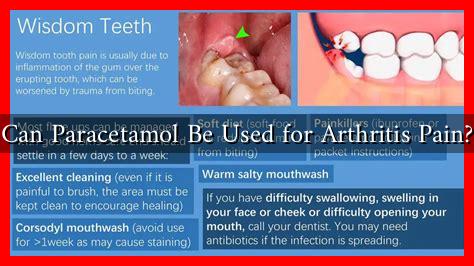-
Table of Contents
Can Paracetamol Be Used for Arthritis Pain?
Arthritis is a common condition that affects millions of people worldwide, leading to chronic pain and reduced mobility. Among the various treatment options available, paracetamol (also known as acetaminophen) is often considered for managing arthritis pain. This article explores the efficacy of paracetamol in treating arthritis pain, its mechanisms, and the considerations for its use.
Understanding Arthritis and Its Pain
Arthritis encompasses over 100 different types of joint diseases, with osteoarthritis and rheumatoid arthritis being the most prevalent. The pain associated with arthritis can be debilitating, affecting daily activities and overall quality of life. Common symptoms include:
- Joint pain and stiffness
- Swelling and inflammation
- Reduced range of motion
- Fatigue and general malaise
Given the chronic nature of arthritis, effective pain management is crucial for maintaining functionality and well-being.
What is Paracetamol?
Paracetamol is a widely used analgesic and antipyretic medication. It is often recommended for mild to moderate pain relief and is available over the counter in various forms, including tablets, capsules, and liquid formulations. Unlike nonsteroidal anti-inflammatory drugs (NSAIDs), paracetamol does not have significant anti-inflammatory properties, which raises questions about its effectiveness in treating arthritis pain.
How Does Paracetamol Work?
The exact mechanism of action of paracetamol is not fully understood, but it is believed to work primarily in the central nervous system. It inhibits the synthesis of prostaglandins, which are chemicals in the body that promote inflammation and pain. This action helps to alleviate pain without the gastrointestinal side effects commonly associated with NSAIDs.
Evidence Supporting Paracetamol for Arthritis Pain
Several studies have examined the effectiveness of paracetamol in managing arthritis pain. A systematic review published in the journal BMJ found that paracetamol can provide modest pain relief for individuals with osteoarthritis. Key findings include:
- Paracetamol was effective in reducing pain intensity in patients with knee and hip osteoarthritis.
- It was found to be comparable to NSAIDs in terms of pain relief, although it may not address inflammation.
- Patients reported fewer gastrointestinal side effects compared to those taking NSAIDs.
However, it is essential to note that while paracetamol can be beneficial, it may not be sufficient for all patients, particularly those with severe pain or inflammation.
Considerations and Risks
While paracetamol is generally considered safe when used as directed, there are important considerations to keep in mind:
- **Dosage**: The maximum recommended dose for adults is typically 4,000 mg per day. Exceeding this limit can lead to liver damage.
- **Chronic Use**: Long-term use of paracetamol should be monitored by a healthcare professional to avoid potential complications.
- **Combination Therapy**: For some patients, combining paracetamol with other medications, such as NSAIDs or physical therapy, may provide better pain relief.
Conclusion
Paracetamol can be a useful option for managing arthritis pain, particularly for those who experience mild to moderate discomfort. While it may not address inflammation directly, its analgesic properties can help improve quality of life for many individuals. However, it is crucial to use paracetamol responsibly and consult with a healthcare provider to determine the most appropriate treatment plan based on individual needs and circumstances.
In summary, paracetamol can be an effective part of an arthritis pain management strategy, but it should be used judiciously and in conjunction with other therapies when necessary. As always, patients should engage in open discussions with their healthcare providers to tailor their treatment plans effectively.

